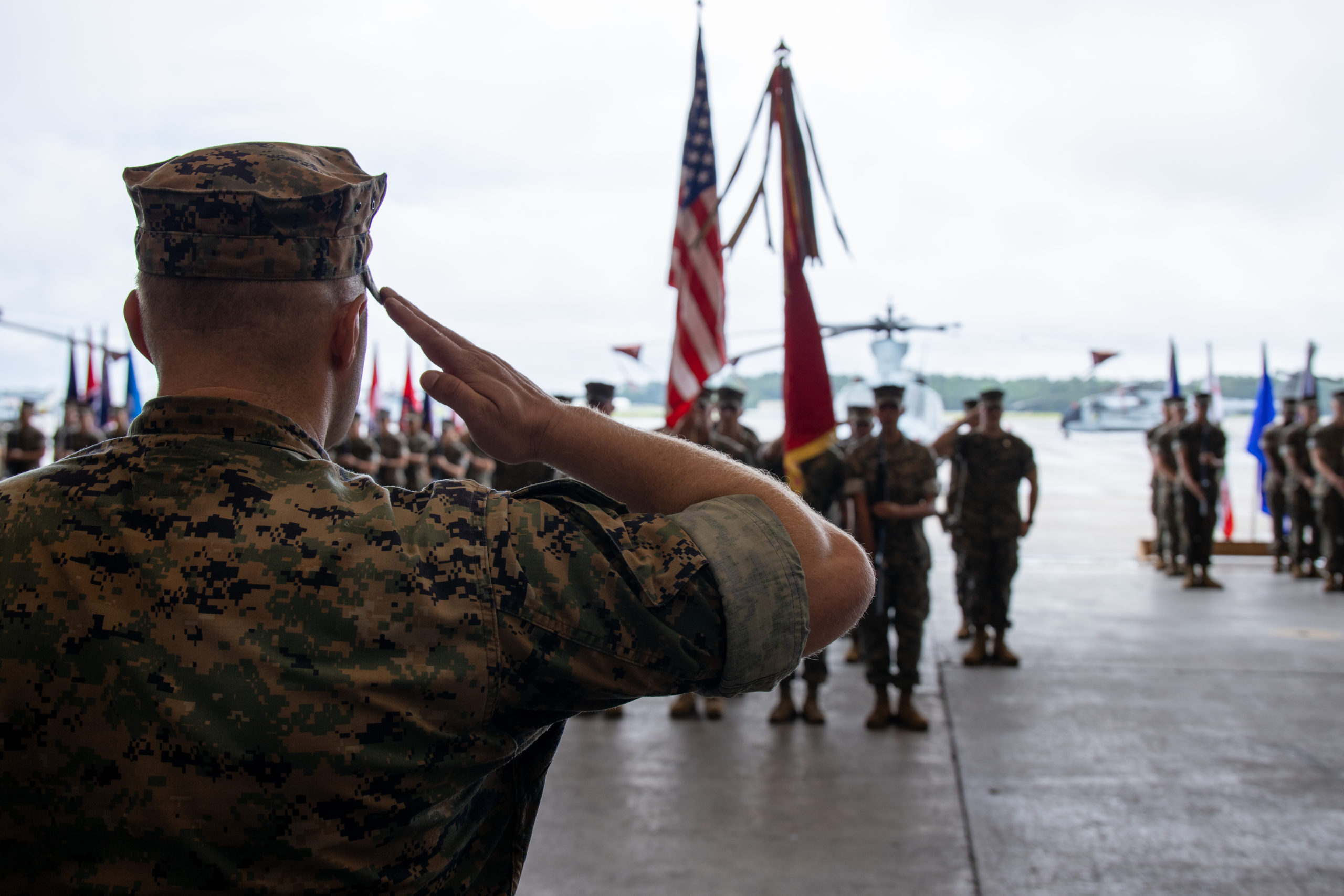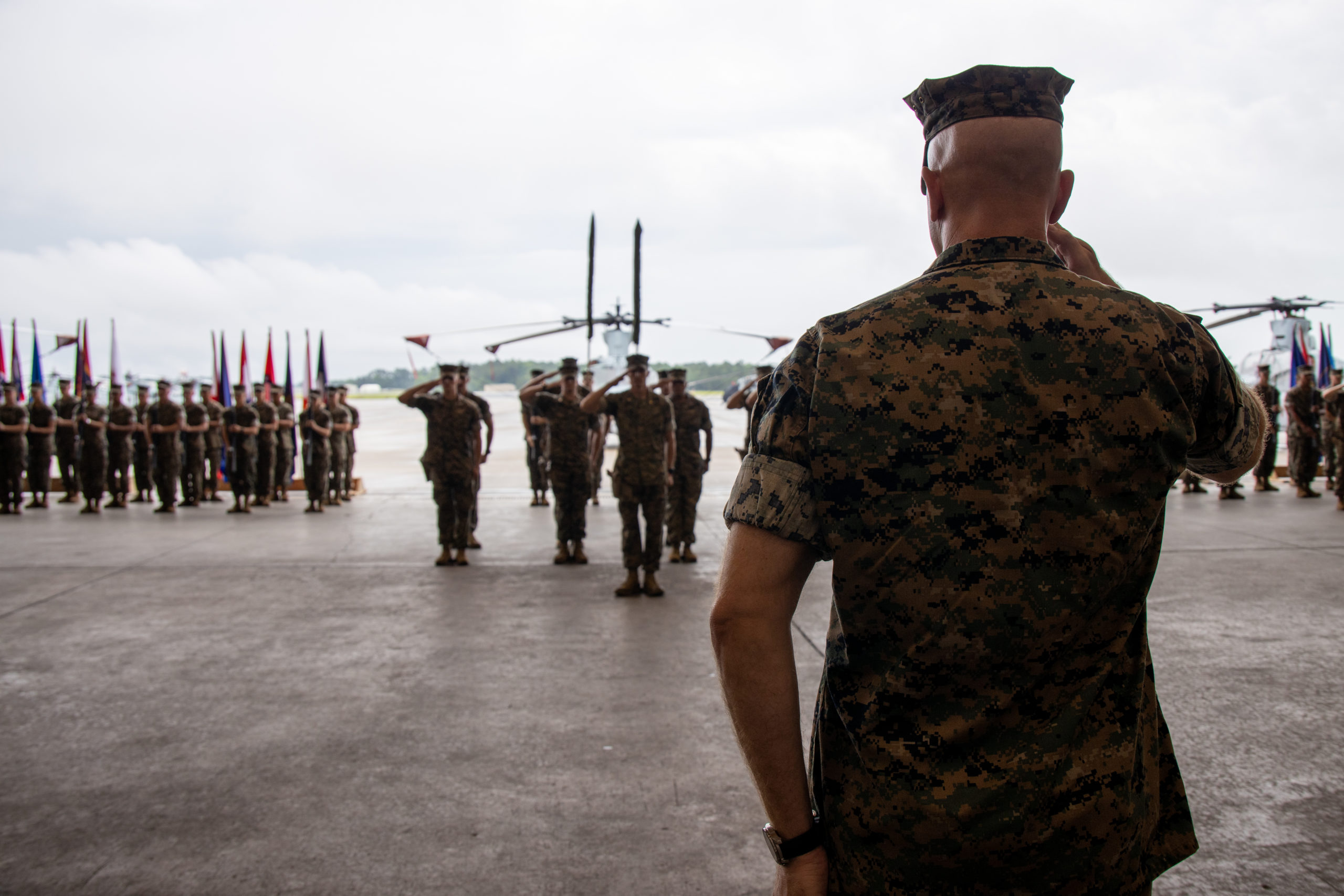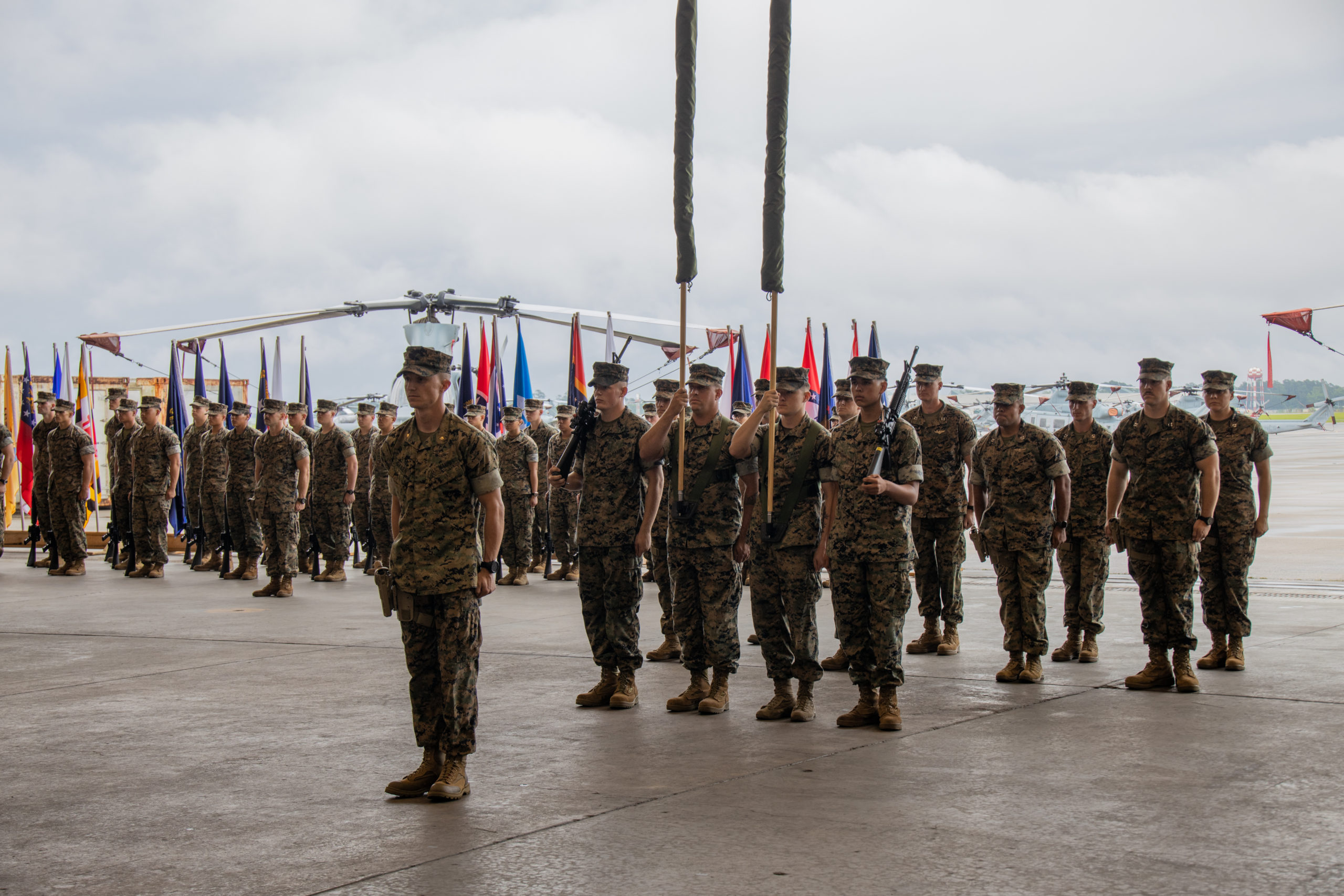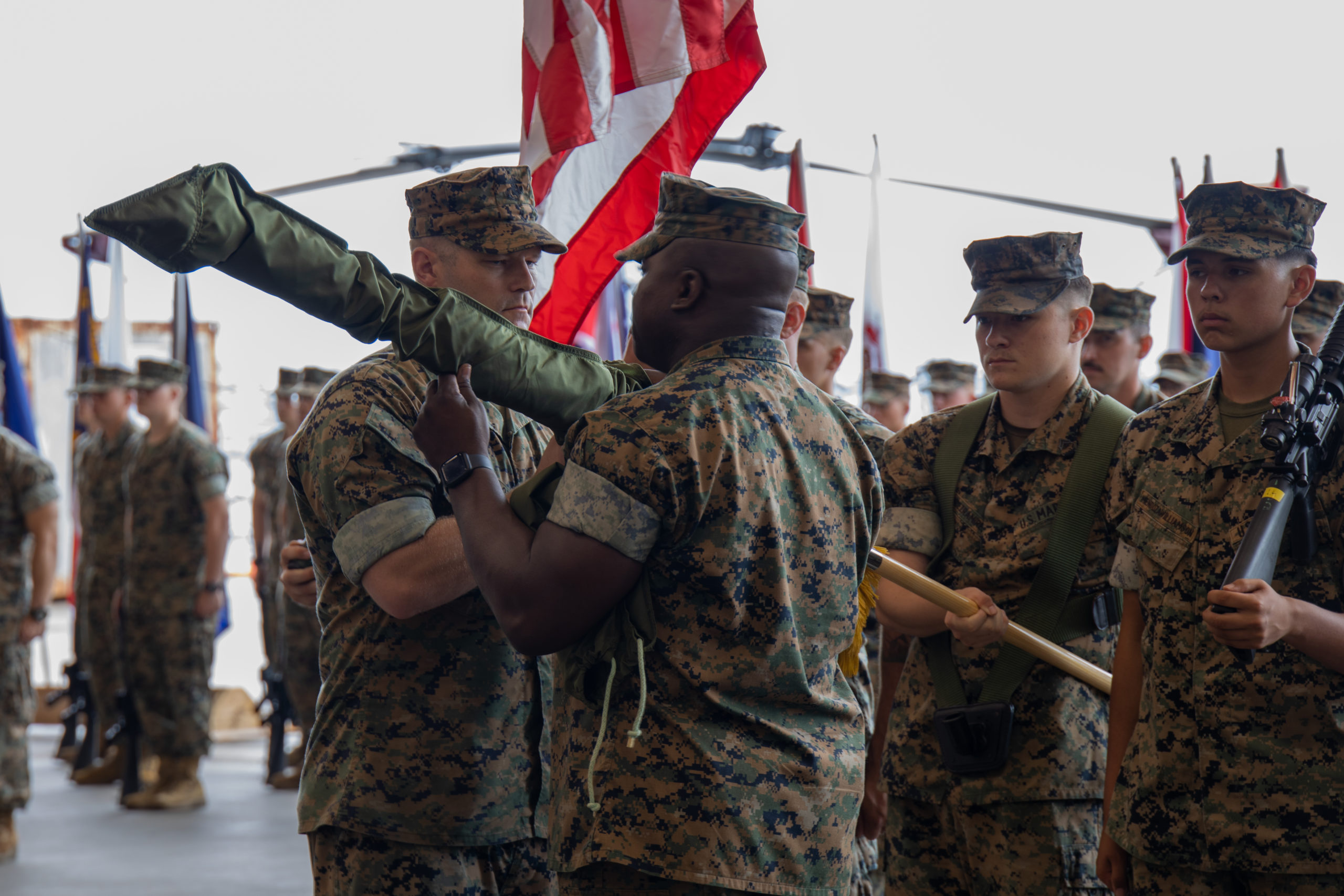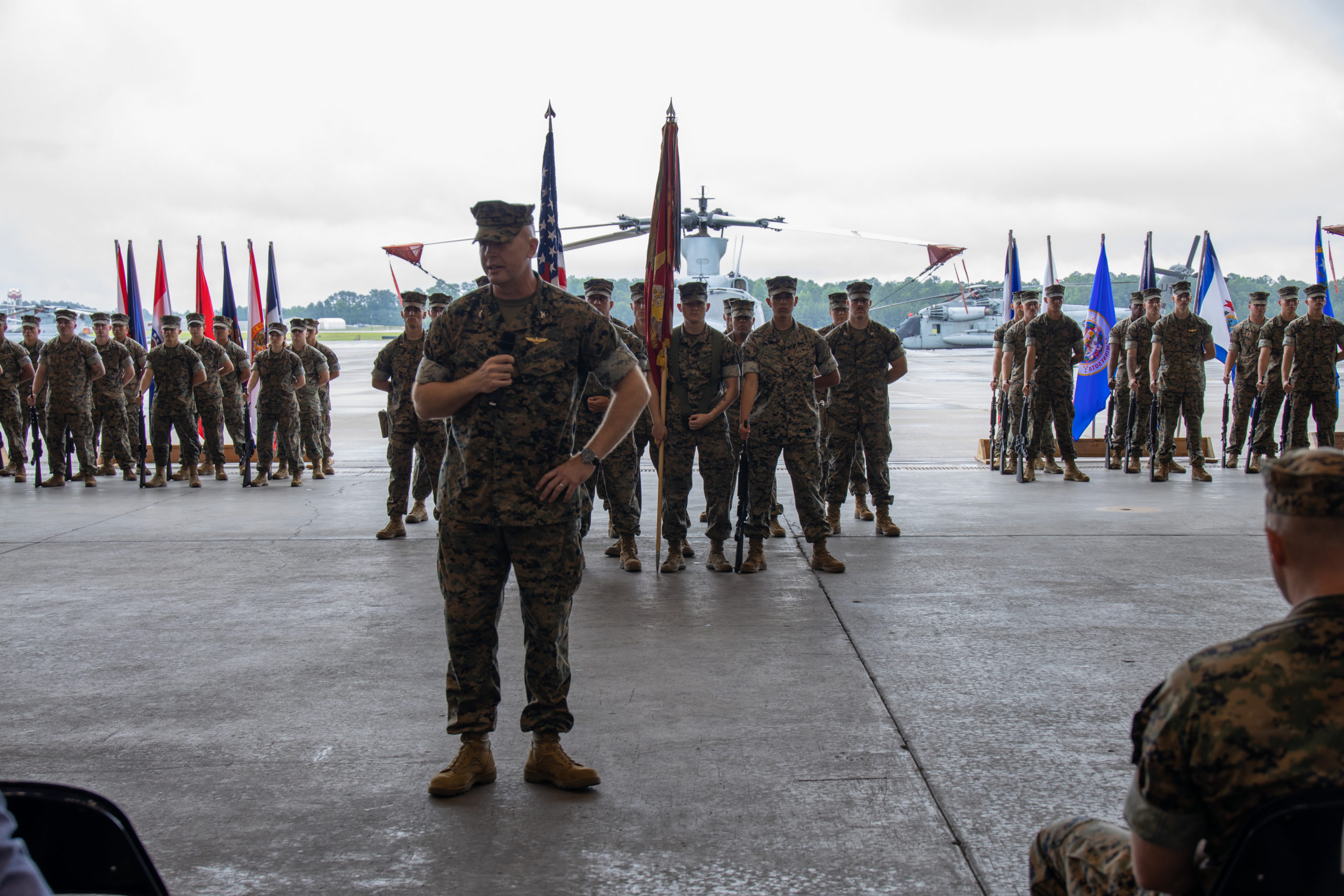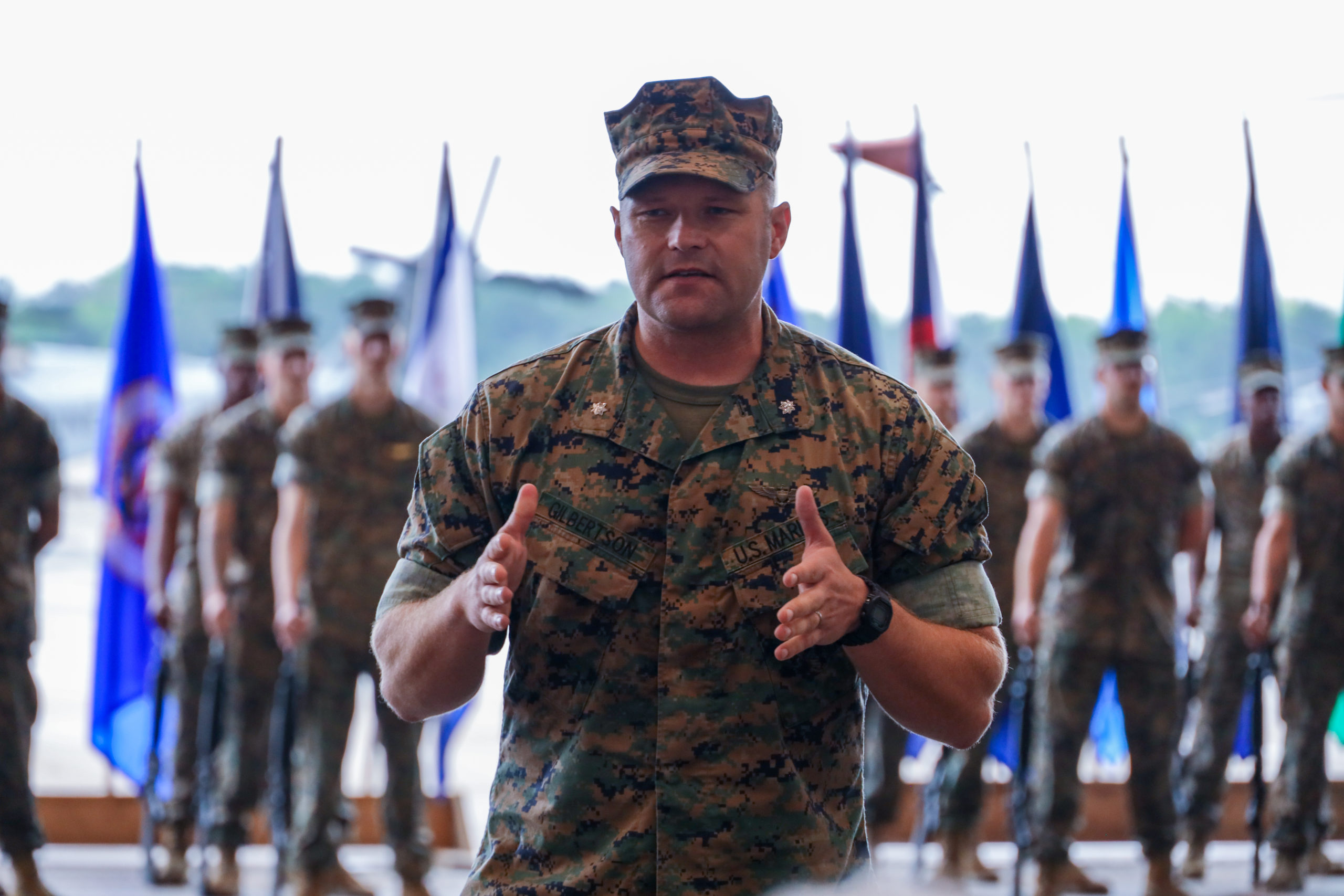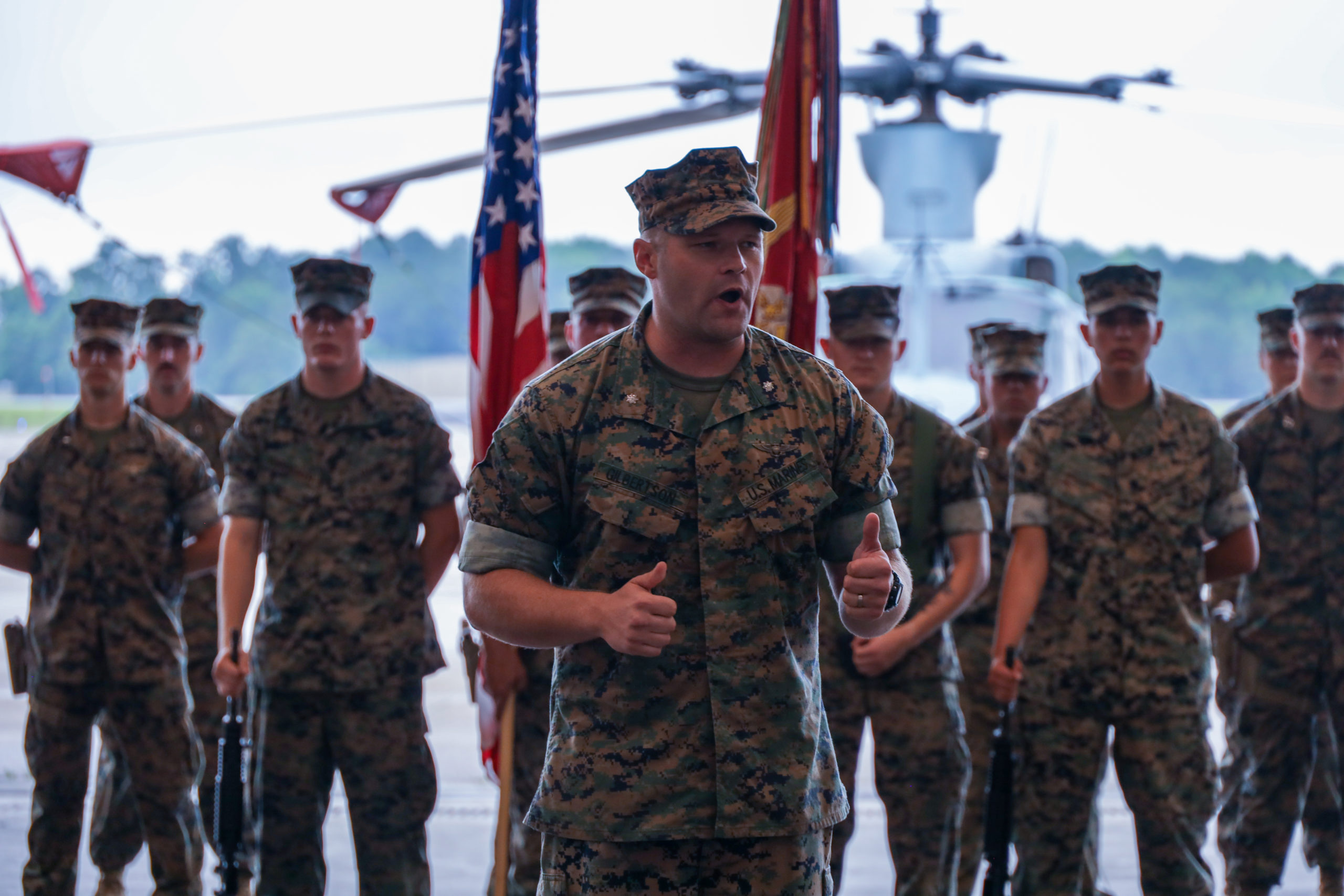By Robbin Laird
My recent discussions with LtGen Heckl and visits to MAWTS-1 have both reinforced the nature of the USMC and its role within the overall strategic shift the U.S. military is undergoing. The U.S. military is being reshaped to enhance its survival and lethality through an enhanced ability to conduct distributed operations in various forms which also allow it to maintain global presence.
In this shift, the role of logistics has gone up dramatically. There is no way to distribute force and have it operate effectively without logistical support delivered to the point of operational need. It is obvious that significant innovation is required to deliver such a capability.
One element of such innovation for the USMC resides in the evolution of its heavy lift helicopter fleet, the CH-53E and the addition of the new CH-53K. The expanded capabilities presented by the CH-53K are in line with several changes in the strategic direction of military innovation and the upgrades to the CH-53E allow it to engage in the key shift associated with the payload revolution.
While the heavy lift helicopters will continue to perform their historical function of carrying personnel and equipment in support roles, they will be carrying new payloads into the future, including operating in combined arms operations with unmanned systems as well.
In my recent conversation with Col Kate Fleeger, the NAVAIR program manager of H-53 helicopter programs, see emphasized this shift in the following words: “The heavy lift helicopter can carry significant loads, but those loads are changing over time. What payloads are we going to carry over time? With the roll on roll off systems we have and are developing, with new bolt on capabilities, we are limited only by our imagination with regard to evolving payloads to be carried into the future.”
We discussed both the CH-53K and the CH-53E modernization from this point of view. The CH-53K as a digital aircraft is built for the evolution of the U.S. military for a future of working with a variety of payloads, including unmanned systems. The upgrades of the CH-53 enable it to work with a new variety of payloads as well.
Col Fleeger provided an update on the CH-53K which highlighted essentially that they were on a solid path with the CH-53k. She noted: “14 aircraft have been delivered and we are expecting two more next month and another before the end of the year. The squadron at New River has been taking the aircraft through its paces, including participating at WTIs at MAWTS-1. Essentially it is business as usual.”
This digital aircraft is optimized to work with a variety of new payloads, notably with unmanned systems. But the upgrades to the CH-53E have not been as recognized as moving the legacy heavy lift forward into being able to work with new payloads as well.
On February 7, 2024, NAVAIR released a press release which highlighted an important modernization effort with the CH-53E.
The CH-53E Super Stallion heavy lift helicopter is breaking new ground for naval aviation. In December 2023, H-53 Heavy Lift Helicopters Program Office (PMA-261) started installation of a first-ever fully integrated, hard-mounted commercial off-the-shelf tablet functioning as a primary mission display on a naval aircraft. In doing so, the CH-53E Mission Data Extender team provided a replacement for a legacy capability while also enhancing current operational capabilities at a fraction of the development cost and schedule of a new mission display.
“This is a huge step toward open architecture, innovative solutions to mission-data presentation,” said LCDR Neil Whitesell, PMA-261 In-Service Avionics Systems project officer. “We did it at low cost, fast, and we provided a major capability improvement to the warfighter.”
Currently, the CH-53E Super Stallion uses two instrument panel-mounted Smart Multi-Function Color Displays (SMFCDs) as primary mission displays. The SMFCD presents hover cueing, ownship position, threat reports, route/waypoint information, moving map, and real-time Forward Looking Infrared (FLIR). The SMFCD is currently suffering from reliability and reparability issues that reduce availability on the flight line and hinder readiness. Due to the high cost and lengthy timeline to perform a technical refresh on the existing SMFCDs, the program office required an innovative solution.
The PMA-261 Avionics Integrated Project Team (IPT), in conjunction with the Tactical Mobility (TacMo) IPT at Naval Air Warfare Center, Weapons Division (NAWCWD), fleet, and industry partners, developed a cyber-resilient system of systems collectively known as the Mission Data Extender (MDE) to replace the aging SMFCD.
MDE used a novel mix of developmental and non-developmental commercial/government off-the-shelf (C/GOTS) components to provide legacy SMFCD capability, while also enhancing operational capability. The system was comprised of a GOTS avionics bus reader (MOB HUB) developed by the China Lake TacMo IPT, and the COTS Miniature Encrypted Wireless Link (MEWL) and Marine Air-Ground Tablet (MAGTAB) provided by Kranze Technology Solutions (KTS). Additionally, MAGTAB required a cockpit instrument panel mount to allow for heads up FLIR presentation in the cockpit.
In close partnership with fleet users and an industry partner, Integrated Consultants Incorporated (ICI), the MDE team developed the first-ever permanent primary instrument panel mount for a COTS tablet in the naval aviation enterprise. The resulting Informant Mount provides for continuous tablet charging, quick mount/dismount of the pilots’ MAGTABs, and allows for swap-in/swap-out interchangeability with legacy SMFCDs.
The Informant Mount provided flexibility for the fleet operators to tailor their preferred mission display according to mission requirements and available hardware, and to utilize their MAGTAB as both an instrument panel mission display and/or a kneeboard. The same physical MAGTAB can now be used for mission planning, assault package briefing, mission execution, and section debrief without the need for removable media.
In addition to mounting provisions for the MAGTAB, the MDE system also provided much-needed permanent mounting provisions for carry-on data terminals widely used throughout the CH-53E fleet. As a result, the capability of the CH-53E mission display expanded to include a new Automatic Dependent Surveillance-Broadcast (ADS-B) capability, as well as Mobile User Objective System (MUOS) Data connectivity via carry-on ground radios. As an additional capability enhancement, the MDE was also designed to interface seamlessly with the newly fielded Link16 and ANW2 DI system being incorporated on the CH-53E during MDE development.
Finally, MDE development required the creation of a new software application to provide the legacy hover cueing displays available in the SMFCD. The program office was able to leverage their existing Software Support Activity (SSA), Noetic Inc, to code and deliver a new application to the MAGTAB within a single design sprint. By virtue of hosting this capability on an open system tablet, mission display capability insertion can now occur on the order of months, and at a fraction of the cost of developing new proprietary software code.
“The CH-53E now has an aircraft-powered, WiFi-based mission display capable of seamless interoperability with several carry-on data terminals, and capable of walk-on/walk-off expeditionary mission planning,” LCDR Whitesell said. In addition, the integration allows for rapid capability insertion through Modular Open Systems Approach (MOSA) concepts, he added.
The MDE was an exemplary example of NAVAIR’s capacity for organic innovation and rapid fielding. Altogether, the MDE system managed to bring all legacy SMFCD capability forward, concentrate all digital interoperability data onto a single aircrew interface, and place that interface on the pilot instrument panel as a tablet-based primary mission display. MDE represented a huge leap in capability and readiness, at less than one-third of the cost and schedule to upgrade the legacy SMFCD display.
PMA-261 manages the cradle to grave procurement, development, support, fielding and disposal of the entire family of H-53 heavy lift helicopters.
With this modernization, the CH-53E becomes more capable in handling “of walk-on/walk-off expeditionary mission planning” and supporting new payloads associated with roll on roll off and bolt on capability.
As Col Fleeger commented: “The CH-53K is a significant new capability for the Marine Corps but it does not mean that we are finished with our ability to modernize the CH-53E. We can add bolt-on systems which allow this heavy lift asset to become a mobile command station or a mobile weapons transportation system or into what kind of outside the box concept we can envisage for the aircraft.”
In my new book written with Ed Timperlake about MAWTS-1, we highlighted how the Marines work innovation from the bottom up within an overall effort of strategic redesign shaped by Marine Corps leadership. Col Fleeger very much emphasized the same.
She noted: “The operating crews will drive the out of the box thinking about how we can use our heavy lift assets to do new things and work new thinking about what payloads we can and should carry. In the Marine Corps, there is not simply out of the box thinking, it is really about operational innovations, and such innovations will drive new ways to use the CH-53K forward and suggest innovations we can work with the remaining legacy heavy lift aircraft.”
Featured Photo: U.S. Marines flying a CH-53K King Stallion heavy-lift helicopter transported an F-35C Lightning II airframe from the F-35 Integrated Test Force at Patuxent River (Pax ITF) to a Navy unit located at Joint Base McGuire-Dix-Lakehurst, New Jersey, April 24.
A Marine aviator from Marine Test and Evaluation Squadron 1 (VMX-1) piloted the most powerful helicopter in the Department of Defense that carried the inoperable airframe, which was without mission and propulsion systems, outer wings, or additional equipment, to the Prototype, Manufacturing and Test (PMT) Department of the Naval Air Warfare Center Aircraft Division (NAWCAD) Lakehurst for use in future emergency recovery systems testing.
See also, the folllowing:
The CH-53K Moves to Yuma: The Future is Now
Combined Arms Operations of Manned Aircraft with Maritime Autonomous Systems
And my book on the coming of the CH-53K:


